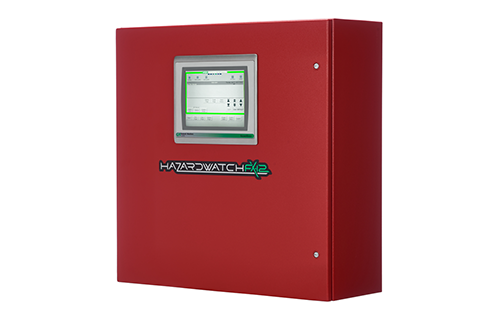- August 16, 2022
- MSA Safety

Aug. 15, 2022 - Process and safety engineers who need a full-featured fire and gas system with built-in cloud-ready capabilities will find the advanced, next-gen HazardWatch FX-12 Fire & Gas System from MSA Safety delivers peace-of-mind and security when it comes to reliable plant safety monitoring.
The new HazardWatch FX-12 Fire and Gas System combines the proven expertise of the industry’s leaders in safety and automation. Developed with MSA’s detection and systems integration expertise, as well as the process control/automation proficiency of Rockwell Automation, the HazardWatch FX-12 System is a powerful and flexible total safety solution designed to protect people, equipment, facilities and nearby communities.
Representing the next generation in highly-intelligent monitoring solutions, the HazardWatch FX-12 System is designed to help process and plant engineers reduce hazard vulnerability while meeting the world’s most demanding safety standards.
Designed for use in hazardous industries, the HazardWatch FX-12 System is ideal for oil/gas production and tanker loading/unloading, petrochemical refining and storage, pipelines and gas compressor stations, LNG facilities, CNG and hydrogen (H2) production and vehicle terminals, electric power generation, aircraft maintenance facilities, aerospace launch sites, automotive, and pharmaceutical manufacturing.
The HazardWatch FX-12 System is designed with Rockwell Automation’s industry proven Allen-Bradley ControlLogix programmable logic controller (PLC) technology and MSA’s advanced gas and flame detection field devices. Allen-Bradley DLR-enabled communication protocols allow secure integration with other Rockwell products. Offering intelligence, flexibility, and reliability, the system’s controller hardware configuration and software have been tested by Factory Mutual to verify NFPA 72 (2013) compliance.
A complete solution in a single system, the HazardWatch FX-12 System includes: a stand-alone local fire and gas alarm panel with touch screen operator interface; a redundant power supply to support the fire and gas system per NFPA 72; easy integration with third party auxiliary devices such as horns, beacons, and fire suppression systems; and FM-approved EtherNet/IP system communications to DCS or ESD Systems, with optional Modbus.
The HazardWatch FX-12 can accommodate up to 12 field devices per alarm panel, with the capability to network up to 12 panels. The panel is wall mounted in a NEMA 12 rated enclosure. User connections are made at a rail mounted "swing link" with terminal blocks organized by input/output type. The PLC processor and the touchscreen are fitted with non-volatile memory.
Highly versatile to support the full range of fire, flame, and gas detection needs, the HazardWatch FX-12 is compatible with the industry’s leading flame and gas sensing technologies from MSA. The flame detector models available include the General Monitors Multi-Spectral Infrared (MSIR) FL4000H, the UV/IR Optical FL500 and others.
For combustible or toxic gas and oxygen deficiency (O2) monitoring, the HazardWatch FX-12 supports the Ultima X5000 and General Monitors S5000 Gas Detectors. In addition, for tank or pipe leak monitoring, the Observeri ultrasonic gas leak (UGLD) detector is available, and for plant or area perimeter monitoring the IR5500 or Senscient ELDS open path gas detectors are supported.
For safety monitoring on-site or in the cloud, the HazardWatch FX-12’s optional FieldServer Gateway supports sharing critical operational data 24/7 via BACnet, EtherNet/IP, Modbus, SNMP, and a host of other protocols. MSA’s remote monitoring and notification solutions help support fire alarm panels and the HazardWatch FX-12 Fire and Gas System by notifying the SCADA system of events in the field.
